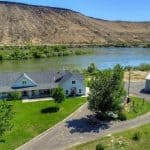Contents
The History of Boise, Idaho
CITY OF TREES
Let us start by knowing where the name “Boise” came from. According to a story, a group of French-Canadian explorers in the early 19th century were traveling through the desert regions of the area. Almost losing hope, they decided to travel up a hill to survey the region. When they reached the top, they were surprised to see a river and a forest of trees surrounding it. They shouted “Les bois! Les bois!” meaning “The woods! The woods!” to express their delight. The river is now the famous Boise River.
THE OREGON TRAIL AND THE STARTING COMMUNITY
Boise’s location is quite ideal for the starting community. It’s at the crossroads of the Oregon Trail as it provides much-needed relief for travelers. The Boise Basin (today, Idaho City) and the nearby Owyhee mines (today, Silver City0) also helped in Boise’s early growth into a settlement.
By 1862, people from every came to the Boise River since it was the start of a gold rush. The community adopted by developing the area to provide services for people dreaming to strike big and for the nearby mines. As the area develops, the national government started taking note of its strategic location. On July 4, 1863, during the U.S. Civil War, the United States Army re-established Fort Boise in the area as a deterrent to attacks happening along the Oregon Trail. The original Fort Boise, located 40 miles west of the city, was the private security arm of the Hudson’s Bay Company in the 1830s until it was disbanded. Boise was declared a city in 1863 and, on December 7, 1864, was designated as the capital of the state of Idaho.
As its population started growing, its needs started growing as well and one such need is water. The Boise Irrigation Project which was started in 1902 sought to provide the region with valuable water supply by building dams starting with Arrowrock Dam on the Boise River. Soon enough, agriculture and logging industries were on the rise.
PLACES OF HISTORY
Idaho is home to the ethnic Basque community, which is one of the largest ethnic groups in the United States, and the city strives to promote and preserve their culture. The Basque Museum and Cultural Center keeps records and relics of great importance. The downtown area of Boise also has a section called Basque Block in their honour. And the Basque festival called Jaialdi is held every five years.
The natural beauty of Boise has also been preserved as decades of planning created the Boise River Greenbelt that passes along the Boise River and through parks like Pierce Park. To think that this extensive urban trail was started in the second half of the 20th century as a response to how the local community and businesses treated Boise River. The Boise River was used as a dumping area for chemicals, trash, and even raw sewage. The City of Boise worked for years to reverse the effects of pollution to create 30 miles of urban trails that offer the scenic and natural beauty of Boise.


